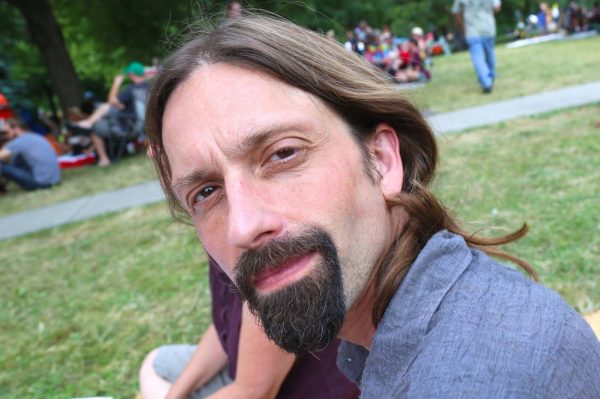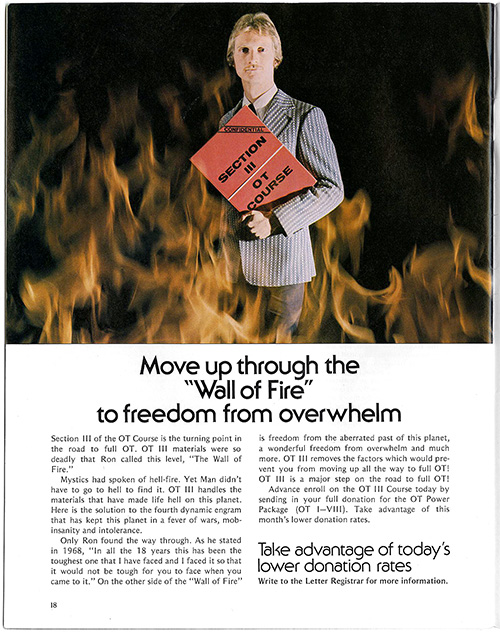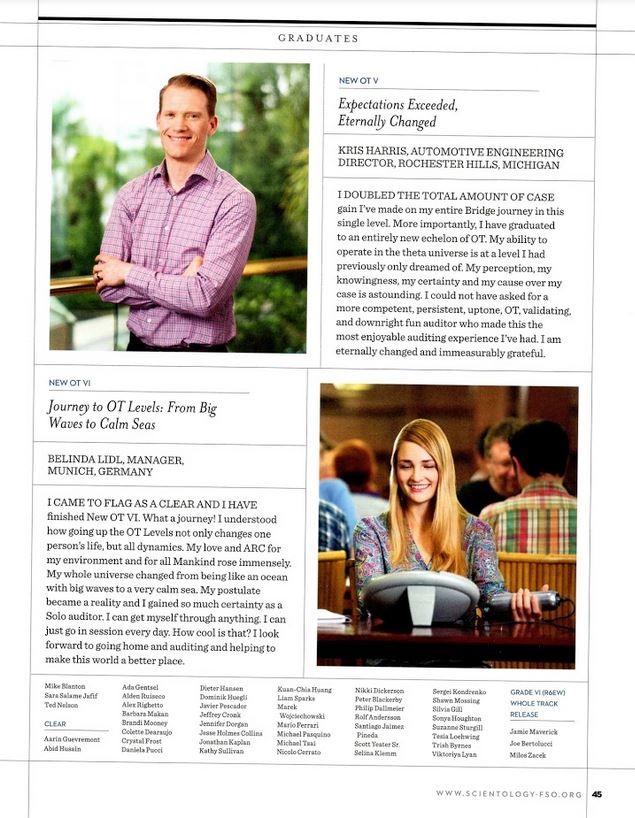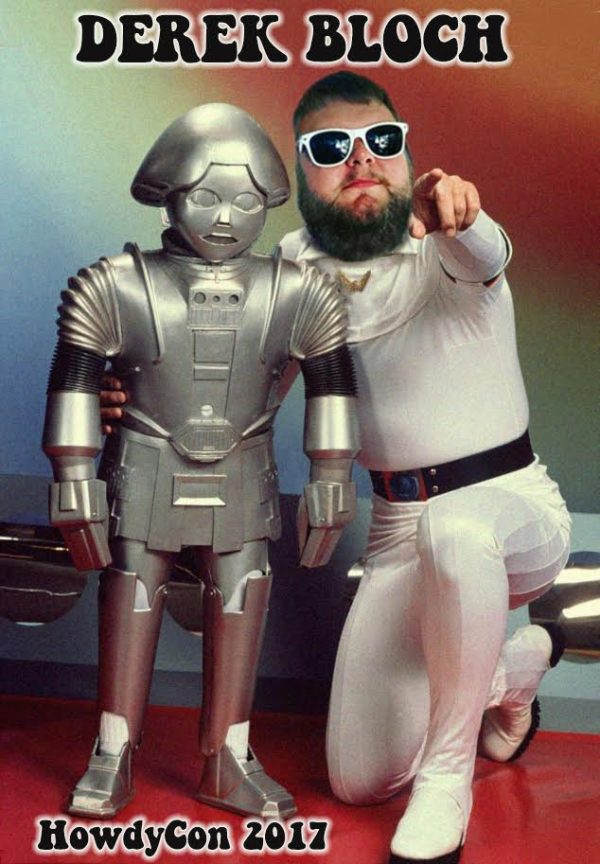On Friday, we expressed our disappointment with Ohio State University professor Hugh Urban’s newest paper, this time about Scientology’s original OT 8 material, which we have also written about. We titled the piece “With Scientology at war in Clearwater, religious studies types still seeking its warm & fuzzy side.” Hugh asked to send a response to our critical review, and we’re glad to present it today, along with our own answer.
I guess I should be flattered that Tony Ortega has taken the time to read and comment on my work. However, I also found many parts of this piece problematic, and I would like to respond briefly to several points that are inaccurate and misleading. For the sake of space, I will limit my comments to the following three.
1. Let’s begin with the title and my alleged search for Scientology’s “warm and fuzzy side.” Anyone who has read my book and the ten or so articles I’ve written on Scientology knows this is pure nonsense. There is neither fuzz nor warmth in anything I’ve written about the church – if anything, I’m usually accused of the opposite. After writing a very positive review of my book, interviewing me at length, and extensively discussing my article on Scientology and the occult, Ortega obviously knows this. I can only conclude that the title here is purely a means of attracting readers with a provocative, titillating headline. But it is extremely misleading and (it would seeming) knowingly so.
2. Ortega took issue with my review of Lawrence Wright’s “Going Clear,” particularly my suggestion that the book focuses too heavily on celebrities and doesn’t discuss the lives of ordinary, non-celebrity Scientologists. He writes: “we find that religious studies academics tend to fetishize the idea of a mythic ‘ordinary’ Scientologist who isn’t caught up in the craziness of David Miscavige and his ruinous campaigns of intense fundraising and terroristic disconnection. Somewhere, these academics assert, there must be examples of simply content Scientologists who are the real, pure example of the faith. ” I’m not sure which academics Ortega is talking about here, but it is not me (this also reflects a common pattern in Ortega’s article, which is to lump all academics together, as if we are all the same and all think the same way). To say that there exist non-celebrity Scientologists is surely not the same as saying that they are more “real or pure” than celebrities. They are roof contractors in Columbus and insurance salesmen in Cincinnati, with as many problems and failings as anybody else. If anything, a genuinely critical analysis of Scientology would want to spend more time on the question of why these types of individuals become involved with and remain in Scientology – even in spite of its increasingly problematic activities and controversial reputation.
(Side note: If he hasn’t already, Ortega should read Donald Westbrook’s recent dissertation, “A Peoples’ History of the Church of Scientology” [2014], which interviews 69 such “ordinary,” non-celebrity Scientologists, most of whom have not progressed to the OT levels).
Much ink has been spilled on the question of why John Travolta would be drawn into and spend millions on the church; but why would a slate-roof contractor in central Ohio? This is not to gloss over the problematic aspects of the church or KSW or any of the rest of the awful stuff that is now well-known; on the contrary, it is to ask the more difficult and complicated question of why this movement has attracted those who are not super rich or famous and has managed to keep them involved for decades, despite a history of extremely problematic behavior?
3. The last section of Ortega’s piece is a critique of my article on the OT VIII materials. Here, I think there is simply some misunderstanding that is based either on a superficial reading of the article and/or on a misleading presentation of short sections that don’t reflect the broader argument. He (mis)characterizes my argument as follows: “But then Urban goes further and says that the upper OT levels are now ‘irrelevant’ as the church no longer really promotes them.” This does not accurately reflect what I said. My point was not that the OT levels are no longer important – of course they are – but rather that, since their leak in the 1990s due to the Fishman case, they have become an increasing source of embarrassment for the church. When I said that the OT levels were downplayed, I said explicitly that they were downplayed in the church’s more “exoteric” materials such as websites and documents meant for public consumption: “In its promotional materials and websites, Scientology now typically emphasizes the more public and ‘exoteric’ aspects of the Church, such as its ability to help personal lives, build families and further careers, as well as its outreach and charitable work.” Obviously, the OT levels are still important for upper-level Scientologists and are still part of the church’s financial bread and butter. But my point was that the public rhetoric surrounding them has shifted due to the history of litigation, exposé, and satire (“South Park,” etc) that they have generated since the 1990s.
Ortega makes the valid observation that the OT VIII text with the controversial “anti-christ” material was released only for a brief period before being withdrawn and replaced by the more innocuous OT materials. This is a good point to highlight, but it only confirms the larger argument of my article – which is that there has been intense controversy and debate surrounding OT VIII from the very beginning, and it has undergone numerous revisions, reframings, obfuscations, and rhetorical maneuverings over the last 30 years. That’s really the whole point about the complex “history of a secret” that is at the heart of my article.
One final and perhaps most important observation: In general, it seems to me that journalists and academics have a mutual interest in providing as much accurate, detailed, and nuanced information as possible about problematic movements such as Scientology. I don’t think it’s productive to that larger end to attack one another, particularly based on misleading and inaccurate characterizations of one another’s work.
— Hugh Urban
Ortega responds:
Hold on there, professor. You’re not going to slip out of this noose so easily. In your response, you claim that the advertising of the OT levels in the church’s Advance magazine in the late 1960s and early 1970s was “meant for public consumption.” Today, you’re saying, the church doesn’t advertise such things to “the public” anymore because of “embarrassment.”
Again, you’re making a huge mistake. Advance was never meant to reach the public outside the church. The advertisements in Advance were always for lower level Scientologists to entice them up the Bridge, just as Scientology publications do today.
What you’re saying is that this advertisement in Advance in the early 1970s…
…is doing something fundamentally different than this series of videos that were put out in 2014…
…or this magazine article Scientology put out this month.
But you’re simply wrong about that. Advance was never meant for the public outside of Scientology. Like the other publications today, it was only meant for members of the church.
And to confirm that, we asked former Scientology spokesman Mike Rinder: Was Advance ever meant for the consumption of non-Scientologists?
“No, never,” he tells us. Advance is still advertising the OTs to the same people it always used to — lower level Scientologists who are being encouraged to go “up the Bridge.”
And for even more confirmation, we spoke with someone who knew Advance magazine in the 1970s better than most — Jefferson Hawkins, its editor at the time. We asked him, was the magazine aimed only at members of the church and not outsiders?
“Yeah, absolutely. Advance magazine hasn’t changed in terms of its audience or its focus. And they still push OT levels,” he says.
Without citing any sources inside or outside the church, Urban comes to this conclusion: “In sum, the [OT levels] secret itself has largely receded from the promise to reveal the deepest mysteries of the universe to a kind of embarrassing anachronism that means little to most practicing Scientologists today.”
“That’s just ridiculous,” Rinder says. “Realize, Tony, that if he is not talking to ex-Scientologists and is only talking to current Scientologists, you know that they can’t talk about this. Either they don’t know because they aren’t OT, or they are OT and they can’t talk about it because they’re forbidden from doing so. They’re going to downplay it because talking about it is the equivalent of getting a death sentence in the church. You can’t talk to current Scientologists about OT because they are going to lie about it. They want to downplay it as much as possible.”
And Hugh Urban is falling into that trap?
“Exactly,” Rinder says.
“Urban is confusing a couple of things,” Hawkins tells us. “One is the actual content of OT 3, which back in the 60s and 70s nobody knew, because it wasn’t all over the Internet. But Hubbard teased it a lot with Ron’s Journal ’67, Advance magazine, the ‘Wall of Fire.’ But nobody knew what it was. Well, they still promote OT in Advance magazine, they still talk about the Wall of Fire. That all stayed the same. What’s different is that the content has been revealed to the general public. That’s the source of the embarrassment. And of course they keep from discussing it because that’s still their big deal. The PR people are just downplaying it to deflect. But to Scientologists, they’re still saying flat out ‘Go OT!’ as much as they ever did. They won’t talk to an outsider, and they’re certainly not going to talk about the OT levels, but don’t mistake that for thinking it ‘means little’ to practicing Scientologists.”
What Urban ends up doing is promoting the idea that current Scientologists have somehow “moved on” from the “embarrassing anachronism” of L. Ron Hubbard’s nutty OT levels and other nonsense. And this is what we meant in our title. Urban is better than most others we refer to as religious studies types (like those who absorb the Gordon Melton view of Scientology at his institute at Baylor University), but Urban is still moving, disappointingly and perhaps even unwittingly, in the same general direction, promoting a kind of ameliorated Scientology divorced from its controversies and abuses. Hence our description, a warm and fuzzy Scientology.
That description may sting, professor, but as long as you’re going to promote the idea of an “ordinary” Scientology divorced from its toxic nonsense, it fits.
(Oh, and one small correction we should have noticed last time. You say in your paper that former spokesman Tommy Davis left the Church of Scientology. That’s not actually true. He testified under oath in 2013 that he was “on leave” from the Sea Org, but that he is still a member of the church. Reports last year that he’s been hanging around Michael Doven suggest that’s still the case.)
As for all being on the same team, we appreciate the sentiment, and we consider Urban’s work better than most, particularly his investigation of Scientology and the occult. But he has to understand, some of the religious studies types we’re talking about have done great harm. They not only have made things even more difficult for ex-Scientologists who want to be taken seriously, but some of these academics have testified in court cases on behalf of Scientology. Apologist professors have helped Scientology maintain cover as it promotes a completely false picture of itself in order to win over “opinion leaders” taken in by its description of itself as a “church.” We don’t think Hugh Urban means to do that, but he should watch out for the idea that Scientology is somehow moving to some kind of anodyne version of itself. Recent developments in Clearwater should make it obvious that nothing is further than the truth.
For those who didn’t see it, here again is Urban’s paper.
——————–
Countdown to Denver!
HowdyCon 2017: Denver, June 23-25 at the Residence Inn Denver City Center. Go here to start making your plans, and book your room soon!
——————–
Bernie Headley has not seen his daughter Stephanie in 4,737 days.
Quailynn McDaniel has not seen her brother Sean in 1,840 days.
Claudio and Renata Lugli have not seen their son Flavio in 2,334 days.
Sara Goldberg has not seen her daughter Ashley in 1,374 days.
Lori Hodgson has not seen her son Jeremy in 1,086 days.
Marie Bilheimer has not seen her mother June in 612 days.
Joe Reaiche has not seen his daughter Alanna Masterson in 4,701 days
Derek Bloch has not seen his father Darren in 1,841 days.
Cindy Plahuta has not seen her daughter Kara in 2,161 days.
Claire Headley has not seen her mother Gen in 2,136 days.
Ramana Dienes-Browning has not seen her mother Jancis in 492 days.
Mike Rinder has not seen his son Benjamin in 4,794 days.
Brian Sheen has not seen his daughter Spring in 901 days.
Skip Young has not seen his daughters Megan and Alexis for 1,303 days.
Mary Kahn has not seen her son Sammy in 1,176 days.
Lois Reisdorf has not seen her son Craig in 757 days.
Phil and Willie Jones have not seen their son Mike in 1,262 days.
Mary Jane Sterne has not seen her daughter Samantha in 1,506 days.
Kate Bornstein has not seen her daughter Jessica in 12,615 days.
——————–
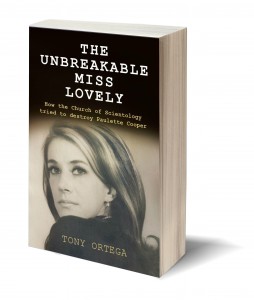 Posted by Tony Ortega on May 1, 2017 at 07:00
Posted by Tony Ortega on May 1, 2017 at 07:00
E-mail tips and story ideas to tonyo94 AT gmail DOT com or follow us on Twitter. We post behind-the-scenes updates at our Facebook author page. After every new story we send out an alert to our e-mail list and our FB page.
Our book, The Unbreakable Miss Lovely: How the Church of Scientology tried to destroy Paulette Cooper, is on sale at Amazon in paperback, Kindle, and audiobook versions. We’ve posted photographs of Paulette and scenes from her life at a separate location. Reader Sookie put together a complete index. More information about the book, and our 2015 book tour, can also be found at the book’s dedicated page.
The Best of the Underground Bunker, 1995-2016 Just starting out here? We’ve picked out the most important stories we’ve covered here at the Undergound Bunker (2012-2016), The Village Voice (2008-2012), New Times Los Angeles (1999-2002) and the Phoenix New Times (1995-1999)
Learn about Scientology with our numerous series with experts…
BLOGGING DIANETICS: We read Scientology’s founding text cover to cover with the help of L.A. attorney and former church member Vance Woodward
UP THE BRIDGE: Claire Headley and Bruce Hines train us as Scientologists
GETTING OUR ETHICS IN: Jefferson Hawkins explains Scientology’s system of justice
SCIENTOLOGY MYTHBUSTING: Historian Jon Atack discusses key Scientology concepts
Other links: Shelly Miscavige, ten years gone | The Lisa McPherson story told in real time | The Cathriona White stories | The Leah Remini ‘Knowledge Reports’ | Hear audio of a Scientology excommunication | Scientology’s little day care of horrors | Whatever happened to Steve Fishman? | Felony charges for Scientology’s drug rehab scam | Why Scientology digs bomb-proof vaults in the desert | PZ Myers reads L. Ron Hubbard’s “A History of Man” | Scientology’s Master Spies | Scientology’s Private Dancer | The mystery of the richest Scientologist and his wayward sons | Scientology’s shocking mistreatment of the mentally ill | Scientology boasts about assistance from Google | The Underground Bunker’s Official Theme Song | The Underground Bunker FAQ
Our Guide to Alex Gibney’s film ‘Going Clear,’ and our pages about its principal figures…
Jason Beghe | Tom DeVocht | Sara Goldberg | Paul Haggis | Mark “Marty” Rathbun | Mike Rinder | Spanky Taylor | Hana Whitfield





